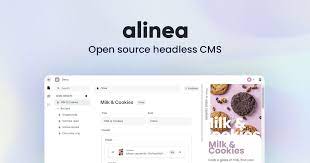In the dynamic landscape of digital content, the demand for flexible and scalable content management solutions has given rise to the prominence of open source headless CMS. This revolutionary approach to content management is reshaping the way organizations handle and deliver digital experiences. In this article, we will delve into the world of open source headless CMS, exploring its benefits, features, and the transformative impact it can have on your content management strategy.
The Essence of Open Source Headless CMS
Open source headless CMS takes a departure from traditional monolithic content management systems by separating the content creation and storage from its presentation layer. In a headless CMS architecture, content is treated as structured data, providing the freedom to deliver it across various channels and devices without being bound to a specific frontend. This decoupled approach empowers developers, marketers, and content creators with unprecedented flexibility.
Advantages of Embracing Headless CMS
1. Flexibility and Customization
Open source headless CMS allows for greater flexibility in designing the frontend of your digital platforms. With no predefined templates, developers have the freedom to create custom user experiences that align precisely with the brand’s identity and user expectations.
2. Future-Proofing
The modular nature of headless CMS makes it inherently scalable and adaptable to emerging technologies. As new devices and channels emerge, your content remains future-proof, ready to be seamlessly integrated without the need for a complete overhaul of your content management infrastructure.
3. Enhanced Collaboration
Decoupling content management enables parallel development of the backend and frontend, fostering collaboration between development and design teams. This accelerates the development process and ensures a more efficient workflow.
Popular Open Source Headless CMS Platforms
1. Strapi
Strapi is a leading open source headless CMS that offers a powerful and customizable content management experience. Its user-friendly interface and robust API capabilities make it a preferred choice for developers and content creators alike.
2. Contentful
Contentful is a cloud-based headless CMS that excels in delivering content across multiple channels. Its API-first approach and extensive marketplace of integrations make it a versatile choice for organizations of all sizes.
3. Ghost
Primarily known as a blogging platform, Ghost has evolved into a headless CMS, offering simplicity and speed. Its focus on publishing makes it an ideal choice for content-centric websites.
Challenges and Considerations
While open source headless CMS brings forth numerous advantages, it’s essential to consider potential challenges. Managing the frontend independently can be demanding, requiring a skilled development team. Additionally, a well-defined content strategy becomes paramount to fully leverage the benefits of a headless CMS.
Conclusion
Open source headless CMS represents a paradigm shift in the realm of content management, providing unparalleled flexibility and scalability. As organizations strive to deliver dynamic and personalized digital experiences, embracing the power of open source headless CMS emerges as a strategic choice. Whether you opt for Strapi, Contentful, Ghost, or other platforms, the key lies in understanding your unique requirements and harnessing the potential of a decoupled content management approach. Embrace the future of content management – embrace open source headless CMS.




